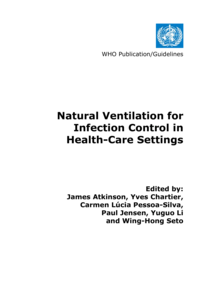Recognized names mentioned in this document
Overton only tracks names from certain institutions. Names must have been cited in at least one policy document and their corresponding affiliation has to be found nearby - you can find more details on the help page.
Yuguo Li
at University of Hong Kong
Xiaojian Xie
at University of Hong Kong
Yuguo Li
at University of Hong Kong
Adrian Sleigh
at Australian National University
Steven Riley
at University of Hong Kong
Kwok Wai Tham
at National University of Singapore
Rod Escombe
at Imperial College London
Wing-Hong Seto
at University of Hong Kong
Yuguo Li
at University of Hong Kong
Yuguo Li
at University of Hong Kong
Wing-Hong Seto
at University of Hong Kong
Li Liu
at University of Hong Kong
Chun-Ho Liu
at University of Hong Kong
Marco Perino
at Polytechnic University of Turin
Zhiwen Luo
at University of Reading
Hua Qian
at University of Hong Kong
Jianlei Niu
at Hong Kong Polytechnic University

